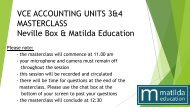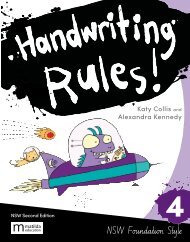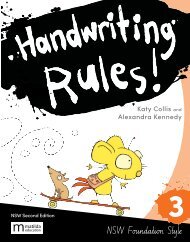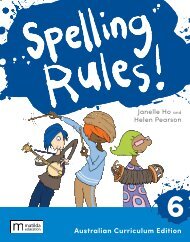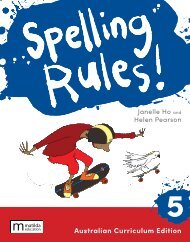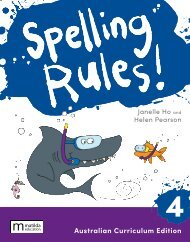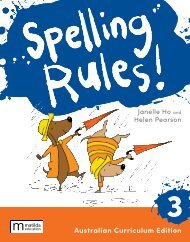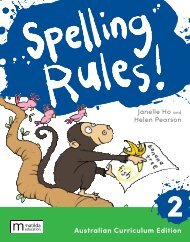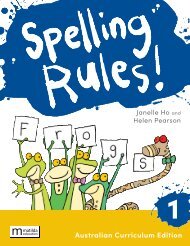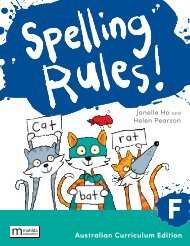All You Need to Teach - Info Literacy 10+
You also want an ePaper? Increase the reach of your titles
YUMPU automatically turns print PDFs into web optimized ePapers that Google loves.
Making the Most of This Book<br />
This resource can be used by teacher librarians working in collaboration with classroom teachers<br />
<strong>to</strong> plan and teach information literacy. It is also ideal for teacher librarians who teach alone in the<br />
library, or for teachers who want <strong>to</strong> teach information literacy in those schools where there is no<br />
teacher librarian.<br />
A ll the <strong>Teach</strong> i n g Tips <strong>You</strong> <strong>Need</strong><br />
In this section you’ll find an overview of the information literacy process, including a useful<br />
step-by-step diagram of the stages in the process. <strong>You</strong> could pho<strong>to</strong>copy and display this in the<br />
library as a reminder for students. For each stage in the process there is also a checklist of the<br />
learning outcomes you would expect students <strong>to</strong> have achieved by the end of the seventh year at<br />
school. These outcomes pages include questions you could ask yourself as you plan the learning<br />
experiences for your students. <strong>You</strong> could use the pages in your program, <strong>to</strong> help your planning, <strong>to</strong><br />
record assessment comments, or as assessment checklists.<br />
A ll the Less o n Ban ks <strong>You</strong> <strong>Need</strong><br />
This section consists of 24 lesson banks built around commonly taught <strong>to</strong>pics or themes. It is<br />
divided in<strong>to</strong> two parts—with twelve lesson banks each for the sixth and seventh years of school.<br />
The activities in each lesson bank build on the previous bank’s activities, so it is suggested that<br />
the year levels here are observed. However, you know your students’ needs, so change or adapt<br />
the order if necessary.<br />
Each lesson bank includes the following sections:<br />
V Learning for Life A list of key ideas: those things students should know, do, understand,<br />
appreciate and value long in<strong>to</strong> the future as a result of this work.<br />
V Focus Questions Suggested questions <strong>to</strong> stimulate student discussion and guide learning.<br />
V Resources A list of items which are essential for the successful completion of the activities.<br />
V Other Useful Resources A list of other useful resources, including websites which may be useful<br />
or interesting and software for integrating ICT.<br />
V Learning Activities A bank of activity ideas for teaching the information literacy process within<br />
that <strong>to</strong>pic. There is scope for both cooperative teaching and for the integration of these activities<br />
in<strong>to</strong> the classroom program. Because library lessons for this age group are often short, and include<br />
circulation, the activities in the book can be spread over a number of sessions. In this case, teachers<br />
should identify what meets their needs, find a logical finishing point for each session, and plan<br />
their term and time accordingly.<br />
V Hint Additional teaching hints, if appropriate, highlighted in boxes.<br />
A ll the Worksh e ets <strong>You</strong> <strong>Need</strong><br />
This section provides pho<strong>to</strong>copiable worksheets <strong>to</strong> be used<br />
in conjunction with the activities in the lesson banks.<br />
5








